Military-technical incidents of the mid-twentieth century
War and preparation for it always stimulates the development of not only conventional weapons, but also contributes to the creation of unusual inventions by military designers, which can unexpectedly change the course of the battle and lead to victory over the enemy.
In the forties of the last century, after the victory over the French army, the Germans created a well-fortified defense system longer than 5 thousand kilometers, which ran along the European coast of the Atlantic Ocean through the territory of Norway, Spain and Denmark. The system was created to protect against attacks from the anti-Hitler coalition countries. The construction, which began in 1942, was completed in record time - in 1944. The fortification line was constantly being improved: reinforced concrete pillboxes were erected to house guns, machine guns, minefields and anti-tank barriers and devices were installed that protect against airborne landing from the air and from the ocean. The Germans gained much earlier experience in building such fortified areas — when creating a system of long-term protective military facilities in 1940 in western Germany (called the West Wall or the Siegfried Line). This bastion had more than 16 thousands of structures. It was assumed that the Western shaft will have in its composition 60 anti-aircraft batteries, which will allow you to create a practically unbreakable air defense system.
And finally, another German system of fortifications on the Finnish territory in the Kola Isthmus - the Mannerheim Line. It was created in 1930 year with the aim of deterring the blow from the USSR. It received its name by the name of Marshal Carl Mannerheim, who initiated the construction of this line of defense back in the year 1918.
These fortified lines of defense built with the latest technology created a great hindrance in the advance of the Soviet troops and Allied military units. Therefore, it is not surprising that military design ideas created projects that would allow these structures to be destroyed with minimal losses for the advancing troops.
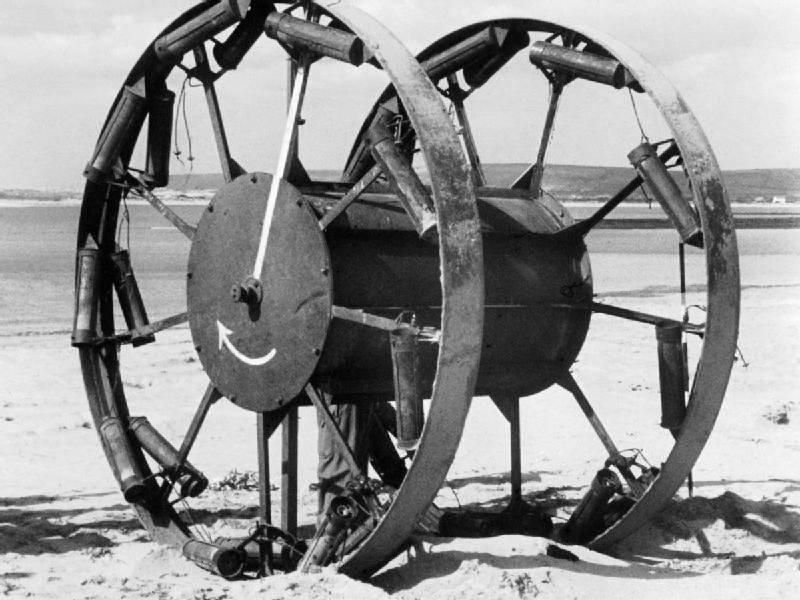
Thus, the allies of the anti-Hitler coalition designed a device capable of destroying the concrete barriers of the Atlantic Wall. It was a drum connected two huge wheels equipped with explosives. To break up this insane machine, rockets were attached to the wheels, which gave the "destroyer" speed up to 60 miles / hour. The designers hoped that the drum would destroy the barricades of the fortified line. The tests, in turn, showed that when the device was moving, the missiles flew off the wheels, as a result of which the direction of the movement, rushing at high speed, of the “destroyer”, becomes unpredictable. I must say that he repeatedly rushed in the direction of their own creators. For this reason, this project has not received its development and was closed.
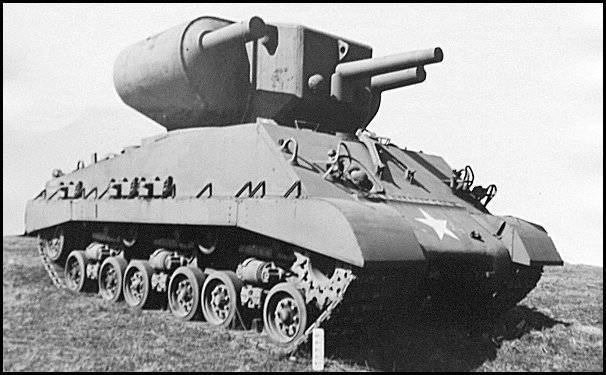
American military designers have created their own version of the "destroyer" of fortified defenses. The device was a hybrid of a certain engineering structure and tank. The basis of the new weapons was the M4A3 tank, which received a powerful and massive bottom and a wider tracked system for greater stability. Four such destroyers were produced. However, this project did not receive its development.
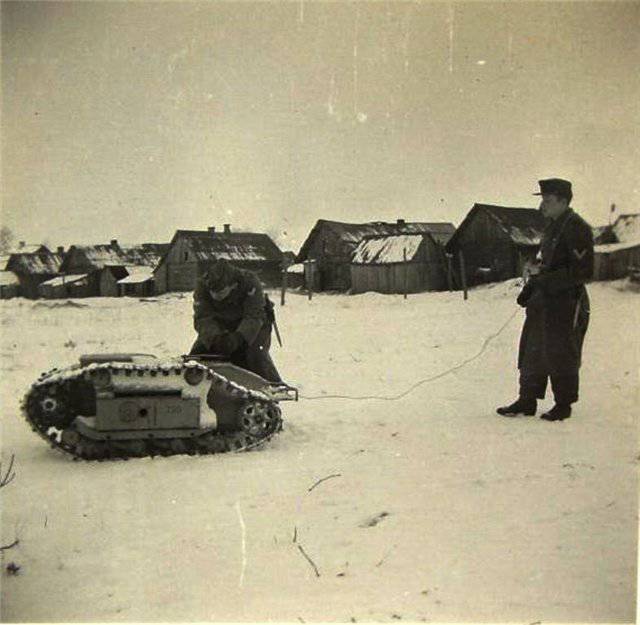
Germany also developed systems for breaking through defenses and destroying enemy equipment and manpower. So, the German engineers designed the tank ("Goliath"), which was used as a self-propelled "living mine". It had a small (miniature) size and a rather small speed, was controlled from a distance and carried about 100 kg of explosives. It was mainly used to eliminate enemy tanks, infantry units and the destruction of structures.
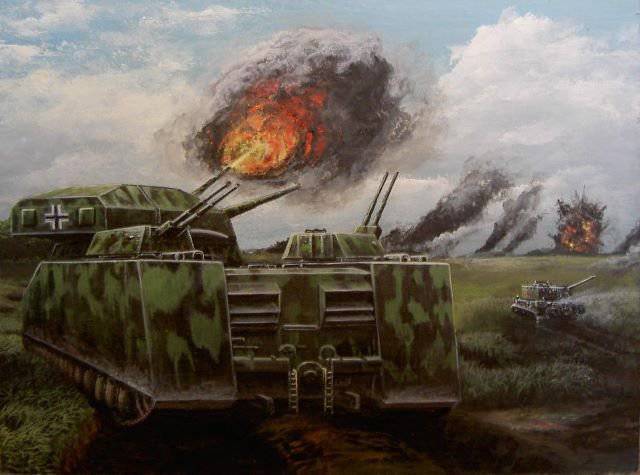
In addition to miniature tanks, the German giant designed the giant tank ("Rat"). It weighed about a thousand tons. The length of the hull was 35 meters. This super heavy tank was designed to break through the enemy defenses and fire support of their units.
The giant tank had a very low mobility, was invulnerable during an artillery bombardment and had good protection against anti-tank mines, but had poor protection from air attacks. The Germans considered him their “miracleweapons“, But this tank was never created in the metal and had no influence on the course of the war. Now this “miracle” is considered only as a military technical incident.
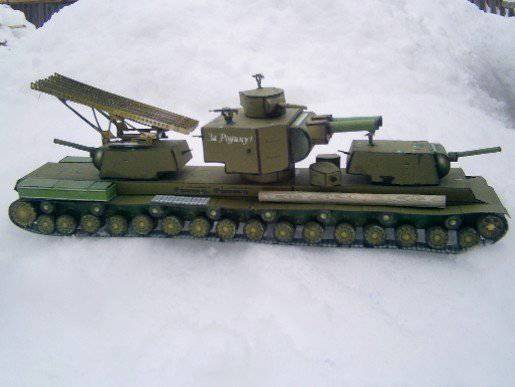
Soviet designers also did not lag behind the Germans in terms of creating projects of unusual types of weapons. One of them was the idea of an unusual hybrid design, called the "Behemoth".
The system was an armored train on tracks. Parts of tanks were used instead of gun turrets, and a Katyusha-type jet cannon was also installed on the common carriage. In fact, no one saw this Soviet miracle weapon, but as a propaganda project, it might have worked.
Not inferior to their allies in the anti-Hitler coalition in the field of amazing structures and the British.
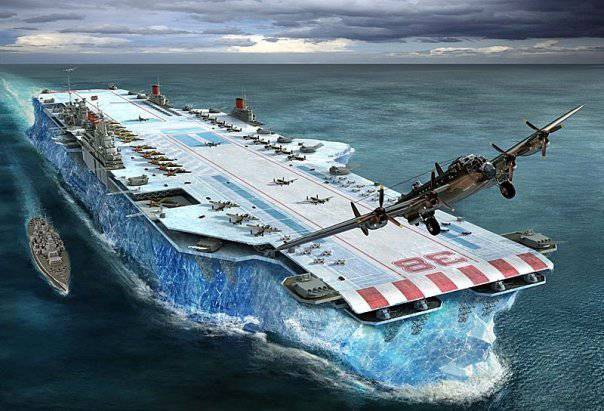
The unusual design of the aircraft carrier was developed on the instructions of the British leadership during World War II. Since, due to the attacks of German submarines, the British fleet had large losses in supply ships, the planned aircraft carrier was supposed to be made from a mixture of frozen water and sawdust (pikerita). The length of the vessel was assumed to be 610 meters, with the width and height of 92 m and 61 m, respectively, the vessel’s displacement should have been 1,8 million tons. A warship could hold up to 200 fighters. However, the project was not implemented, because after the end of hostilities, it lost its relevance.

Along with conventional weapons, great attention has always been paid to the development of chemical weapons. These projects were in most cases fairly generously funded. But here it was not without curiosities. Thus, during the Second World War, the Americans considered the project of the “fetid bomb”. They suggested that dumping containers containing gases, the scent of which consisted at the same time of the smell of a latrine, rotten meat and a huge landfill, would cause the enemy to leave their positions. But this project, most likely, was a psychological weapon, since the American soldiers, who are near the container drop zone, could also be affected by this “chemical” weapon.
Throughout the war, German engineers worked on the development of weapons of great destructive power. Some projects were so unusual that it seemed that ideas were taken from science fiction literature.
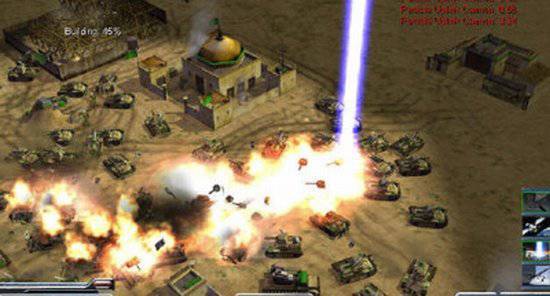
For example, the “solar cannon” project was actually developed by German engineers. The essence of the project is that a device equipped with a huge mirror is put into Earth's earth orbit. His task was to focus the sunbeam and transfer its power to the ground in order to destroy enemy targets. The difficulty consisted in the fact that at that time spacecraft did not exist, which, moreover, could be controlled by a sufficiently large crew. Also, the mirror must be truly enormous - the technology of that time has not yet reached the desired level for this task. Therefore, the idea remained unrealized.
Also, the Germans created another project for an amazing cannon. Thus, during the war, Germany tried to create a gun capable of creating artificial tornadoes. Although the "gun-tornado" and was designed, but it did not create the necessary powerful turbulence at high altitude. As a result, the project was closed.

To achieve victory over the enemy, the Germans used not only technical devices, but also carried out developments in the field of parapsychology. The Americans, in consequence, not only used the experience of these studies, but also continued to work in this direction. They were seriously engaged in the development of telepathy, trying to influence a person or objects at a distance. It was intended in such a non-standard way to obtain not only the secret information of a possible enemy, not going beyond the limits of their laboratories, but also to destroy specific individuals from the enemy's army.
But, not only the technique was used to defeat the enemy. Man also repeatedly used animals for reconnaissance and sabotage operations. Moreover, some episodes are not inferior to the fantastic scenes from the movies.
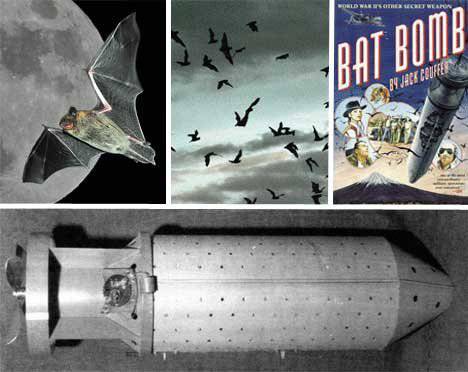
Thus, during the war years, American experts considered a project to create an army of bats. They were supposed to be used for military purposes because of their ability to carry a small load and freely penetrate buildings. The Yankees planned to “equip” these kamikaze mice with small charges of napalm and to drop this landing from the bombers over the territory of Japan. However, this project failed. So, during the test, the mice, which behave very unpredictably, flew into one of the buildings of the American military air base, where the fuel was stored. As a result of the fire all property of the base burned down.

Also, in 60-ies, the Americans considered the project of using stray cats as carriers of listening devices. Miniature equipment was implanted into the body of animals, and the antenna was placed on the tail. As cats walk where they want, the developers thought they would have a wide range of information. But, at the first test, the cat-spy fell under the wheels of a jeep belonging to the American army. If this did not happen, perhaps the Soviet boys would have the opportunity to catch the meowing "bugs."
It is difficult to say how non-trivial methods can lead to victory over the enemy. But, undoubtedly, the one who is able to more skillfully and decisively apply his knowledge and skills in combat operations, as well as use ingenious technical and psychological solutions that are unusual for the enemy, won.
Materials used:
http://mport.bigmir.net/war/1519535-Armejskaja-zhut---6-strannyh-voennyh-opytov
information online resources
Information